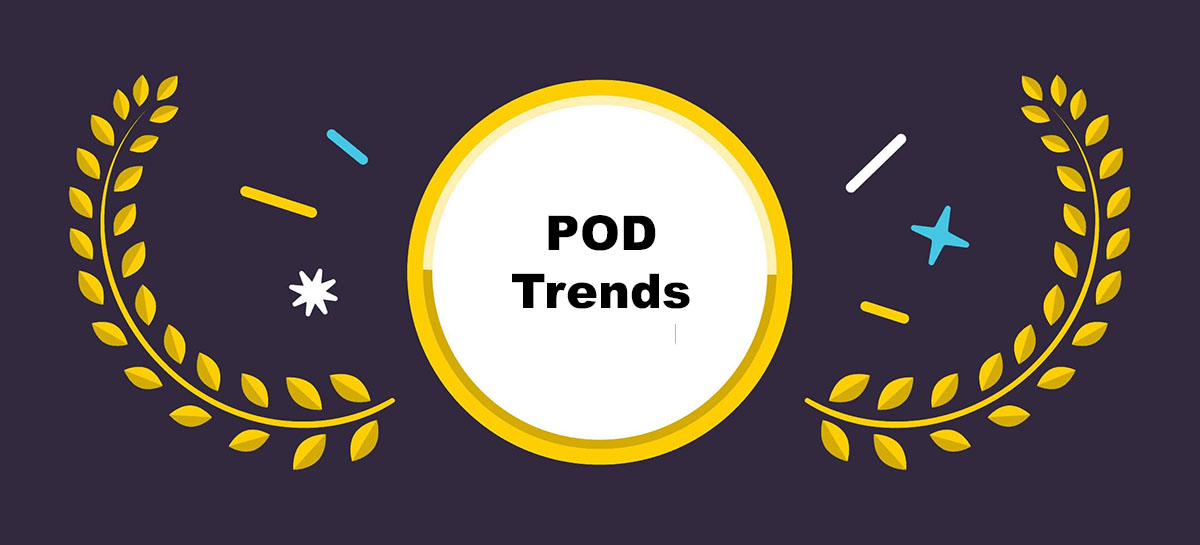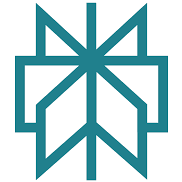The print on demand space moves fast. What worked six months ago might already be dead today.
As someone who studies the market full-time and helps sellers optimise their product lines and branding, I’m constantly tracking emerging design trends, audience behaviour, and buying psychology.
2025 is shaping up to be a year of extremes — where bold, weird designs dominate, and subtle, aesthetic ones often fall flat. If you’re still playing it safe, chances are your store is getting buried.
This guide is based on live research from platforms like Etsy, Shopify, Redbubble, and TikTok, along with performance data from tools like Gogle Trends, Everbee, Trend Rocket, and insights from actual top sellers.
It’s designed to help you focus your energy on what’s working now, not what used to work.
TL;DR – Print on Demand Design Trends 2025
If you’re selling print on demand in 2025, here’s what’s working:
- AI Art is still relevant, but only when styled uniquely
- Anti-design and chaotic fonts grab Gen Z attention fast
- Micro-niches like Goblincore and Lo-fi anime beat generic quotes
- Retro tech references are outperforming vague Y2K aesthetics
- Fake brands with solid design convert like real streetwear
- Eco humour + muted colours connect better than green slogans
- Etsy leads for fast trends, Shopify wins for brand control
Don’t chase the trends. Anticipate them, test fast, and double down on what sticks.
1. AI Art Is Still Hot — But Basic Prompts Are Failing
AI-generated artwork continues to influence the POD space, but in 2025, buyers are more selective. They can tell when something’s just been dropped out of Midjourney or DALL·E with minimal editing. That kind of design used to sell — now it looks lazy.
The best-performing AI art trends this year include:
- Glitchcore and distorted faces
- Cyberpunk scenes with vivid gradients and metallic overlays
- Dreamlike abstract environments, especially when used as poster art or oversized t-shirts
The key is combining AI art with post-editing in tools like Photoshop or Kittl. Sellers seeing real success are creating layered, original designs — not just AI output slapped on a mockup.
Verdict: AI still gives sellers an edge — but only when it’s refined and unique. Mass-generated art is being ignored.
2. Anti-Design and Brutalist Typography Are Grabbing Attention
There’s a clear shift away from clean, minimalist design. Buyers, especially younger ones, are gravitating towards chaotic, intentionally “bad” design — what we call anti-design.
These products are gaining traction:
- Harsh fonts, pixelation, and clashing colours
- Meme-style quotes like: “I hate this shirt” or “404: Personality Not Found”
- MS Paint-inspired doodles and lo-fi digital aesthetics
Why it works: It cuts through the noise. People scroll fast — anti-design grabs attention in under a second and gets shared, especially on TikTok and Instagram Reels.
Verdict: Loud, messy designs are outperforming clean ones. If you’re targeting Gen Z, lean into chaos.
3. Micro-Niches Are Beating Mainstream Trends
Generic “mental health” shirts and astrology quotes are saturated. What’s winning in 2025 are ultra-targeted, emotionally resonant micro-niches. These niches aren’t just aesthetics — they’re full subcultures.
High-converting examples include:
- Goblincore – earthy chaos, mushrooms, overgrown nature
- Tradwife aesthetic – cottage visuals, homemaking pride, Christian references
- Lo-fi anime – washed-out colours, VHS blur effects, soft emotions
Top sellers are identifying these niches early through TikTok trends, Reddit threads, and Pinterest boards — and designing fast to meet demand.
Verdict: Don’t chase mass appeal. Go deep, not wide. One niche community can outsell ten generic designs.
4. Y2K & Retro Tech Are Back — But Deeper
Y2K has evolved beyond metallic fonts and butterfly motifs. In 2025, it’s about referencing actual tech and interfaces from the early 2000s and late ’90s.
Strong sellers include:
- Fake Windows error messages with sarcastic captions
- Retro file folders, old email popups, and boot screen art
- Pixel Tamagotchi art with Gen Z humour
This trend resonates with both millennials who remember it and Gen Z who romanticise it. The sweet spot? Combine nostalgia with humour.
Verdict: Nostalgia is powerful, but specificity wins. Real tech references outperform vague “Y2K vibes.”
5. Fake Brands Are Outselling Real Brands
One of the most interesting shifts this year is the rise of completely fictional brands created for the POD space. These aren’t actual companies — just well-designed logos, slogans, and names that look like they could be a premium label.
Examples that are selling:
- “Certified Flop Era” – sarcastic high-end streetwear parody
- “Delulu Department” – fake government merch with Gen Z humour
- “Void Supply Co.” – edgy minimalist branding with zero backstory
What works is the illusion of branding — and people love wearing ironic or mysterious labels. The designs feel exclusive, even if they’re mass produced.
Verdict: Branding still sells — even if it’s fake. Strong logo design + mock brand = higher perceived value.
6. Eco-Conscious Vibes With Sarcasm Are Performing
Yes, sustainability still matters to buyers. But the tone has changed. It’s no longer “inspirational green living” — it’s cynical, tired, and self-aware.
Examples of products doing well:
- Earth-toned shirts with phrases like “I recycle my trauma” or “Compost me emotionally”
- Simple line art of wilted plants, melting Earth, or sad clouds
- Natural colour palettes — sage, clay, sand, off-white
The success here comes from blending care with comedy. It connects emotionally without being preachy.
Verdict: Sustainability sells better with humour. Be relatable, not righteous.
7. Best Tools to Use for 2025 Design Production
To keep up with trends, speed matters. But so does polish. Here’s a curated list of the tools I recommend to POD clients who want to move fast and stay ahead creatively:
| Tool | What It’s Best At |
|---|---|
| Midjourney / Leonardo | High-end AI visuals, surreal or abstract design generation |
| Kittl | Typography-based design, logo mockups, fake branding kits |
| Canva Pro | Fast product mockups, social media visuals, templates |
| Photoshop | Polishing AI artwork, layering, and complex image adjustments |
| Figma | Layout testing, previews, UI-style mockups |
| Google V3 (Google Trends API) | Real-time trend tracking based on live search data |
| ChatGPT + Claude | Niche research, product names, viral phrases, slogan generation |
| Placeit | Clean POD product mockups for Etsy, Shopify, and Amazon listings |
| HeyGen | AI avatar videos for product explainers, UGC-style video ads |
Why this matters:
Tools like Google V3 are especially important for sellers looking to get ahead of seasonal spikes, viral moments, or sudden niche interest.
When paired with something like HeyGen, you’re able to create scroll-stopping video content or “fake UGC” that gives your POD designs life — even before the product exists physically.
Verdict:
If you’re serious about growth, you need tools that help you create faster, research better, and market with more impact. This combo of AI, design, and video tools gives you all three.
8. What Platforms Are Worth Your Time in 2025?
Here’s how each POD platform is performing right now based on trend responsiveness, growth potential, and seller success rates:
| Platform | Strength | Weakness |
|---|---|---|
| Etsy | Fast trend testing, built-in traffic | High competition, need SEO knowledge |
| Shopify | Full branding control | 100% reliant on paid traffic or social proof |
| Redbubble | Passive, good for evergreen designs | Poor performance on fast-moving trends |
| TeePublic/Zazzle | Easy uploads, evergreen niches | Low margin, low reach |
| Amazon Merch | Huge audience | Long approval times, slow to adapt to trends |
Most successful sellers focus on one or two platforms. Trying to do everything at once spreads your energy thin and delays results.
Verdict: Start with Etsy if you’re trend-focused. Scale to Shopify if you’re building a long-term brand.
Summary: What Should You Actually Do With These Trends?
This year isn’t about playing it safe. It’s about being early, bold, and weird enough to stand out. The print on demand space is saturated, and buyers have seen every minimal design and overused quote already.
If you’re serious about staying ahead in 2025, here’s the action plan:
- Research micro-niches on TikTok, Pinterest, and Reddit
- Use AI tools with post-editing to produce high-quality artwork fast
- Build a fake brand that feels like streetwear or designer parody
- Create designs weekly — don’t rely on monthly updates
- Use Etsy for trend testing and Shopify for long-term scaling
The winners in 2025 are not the best designers — they’re the fastest adapters.






